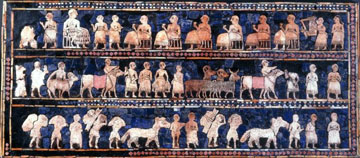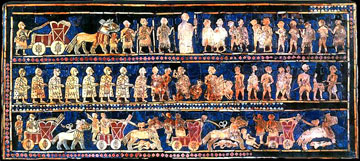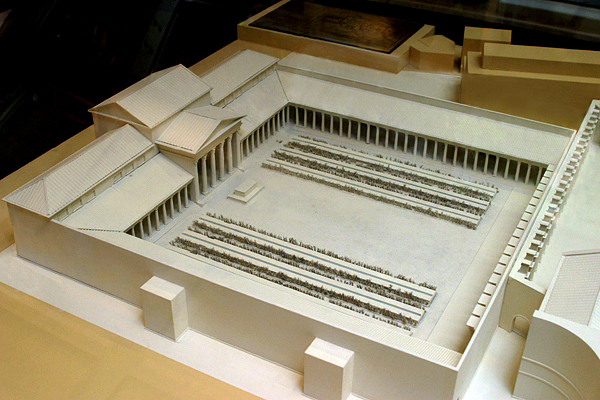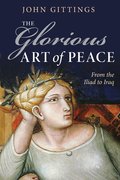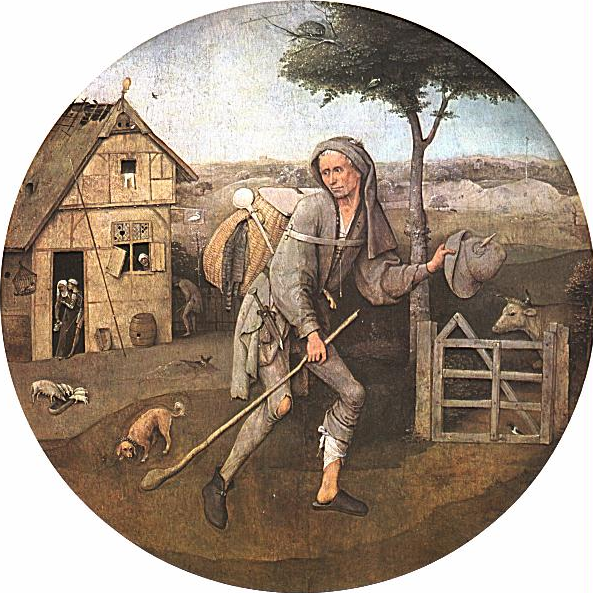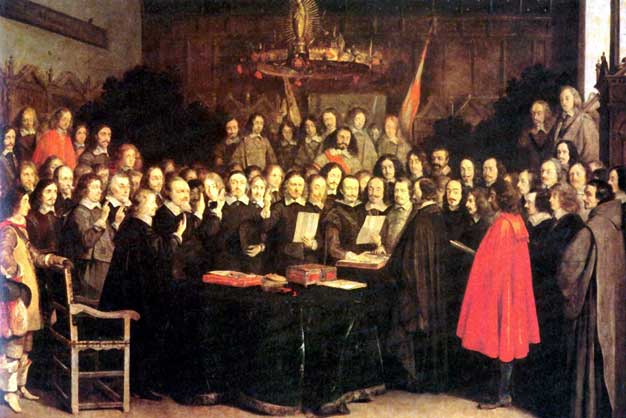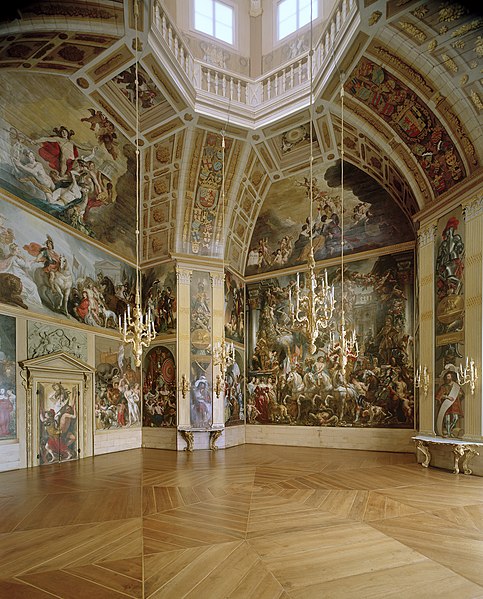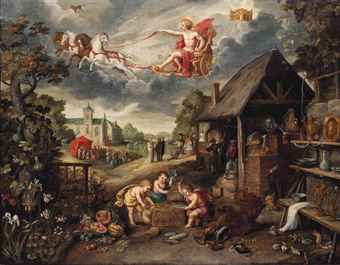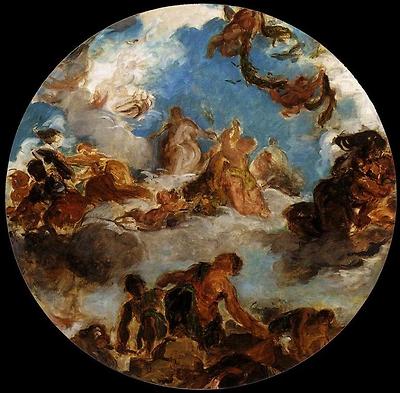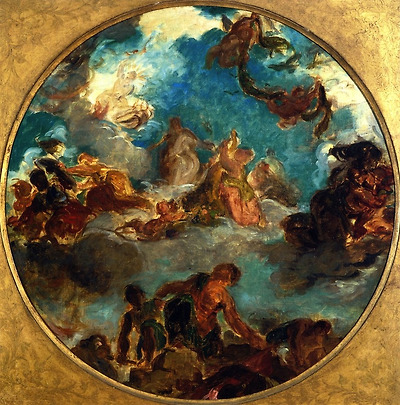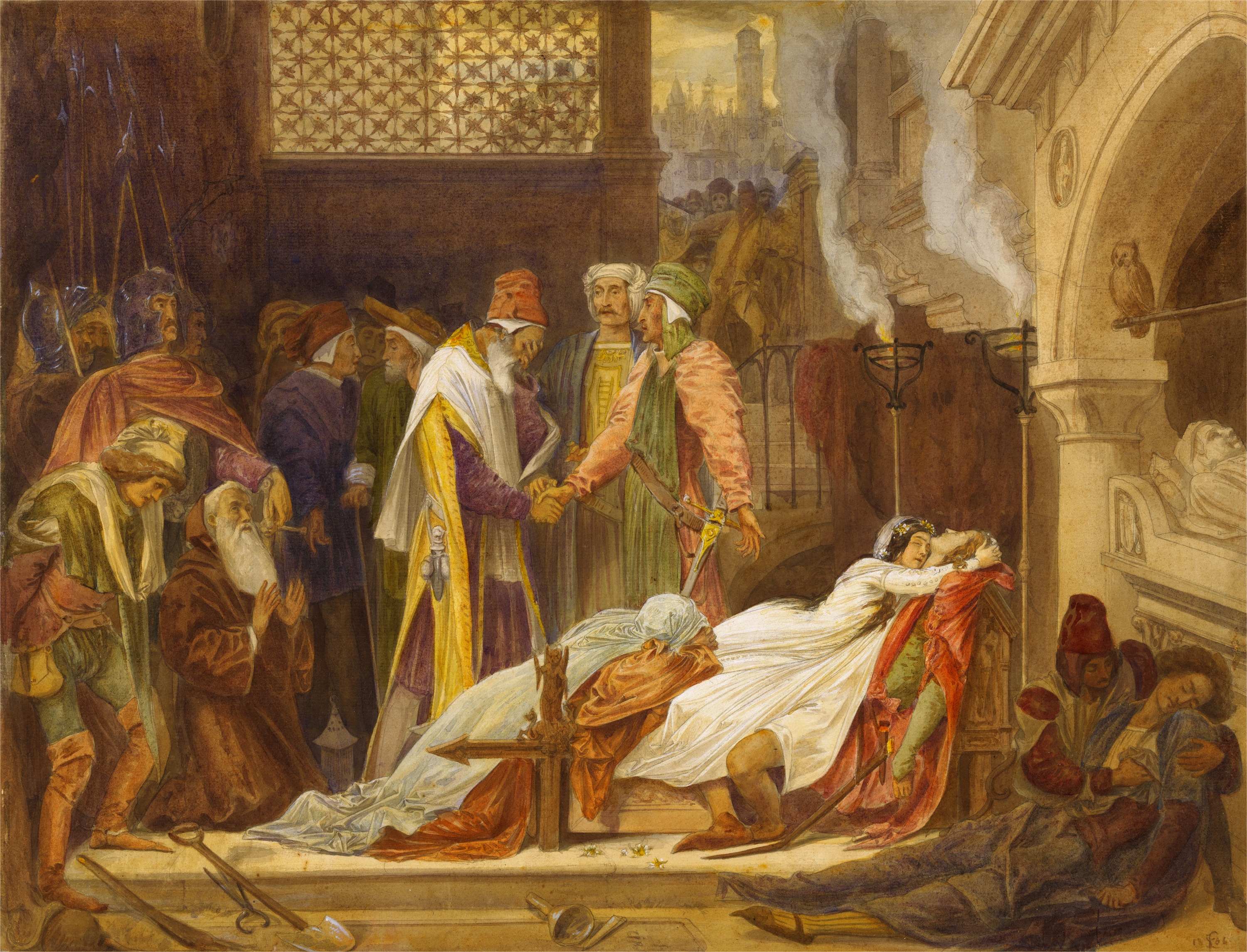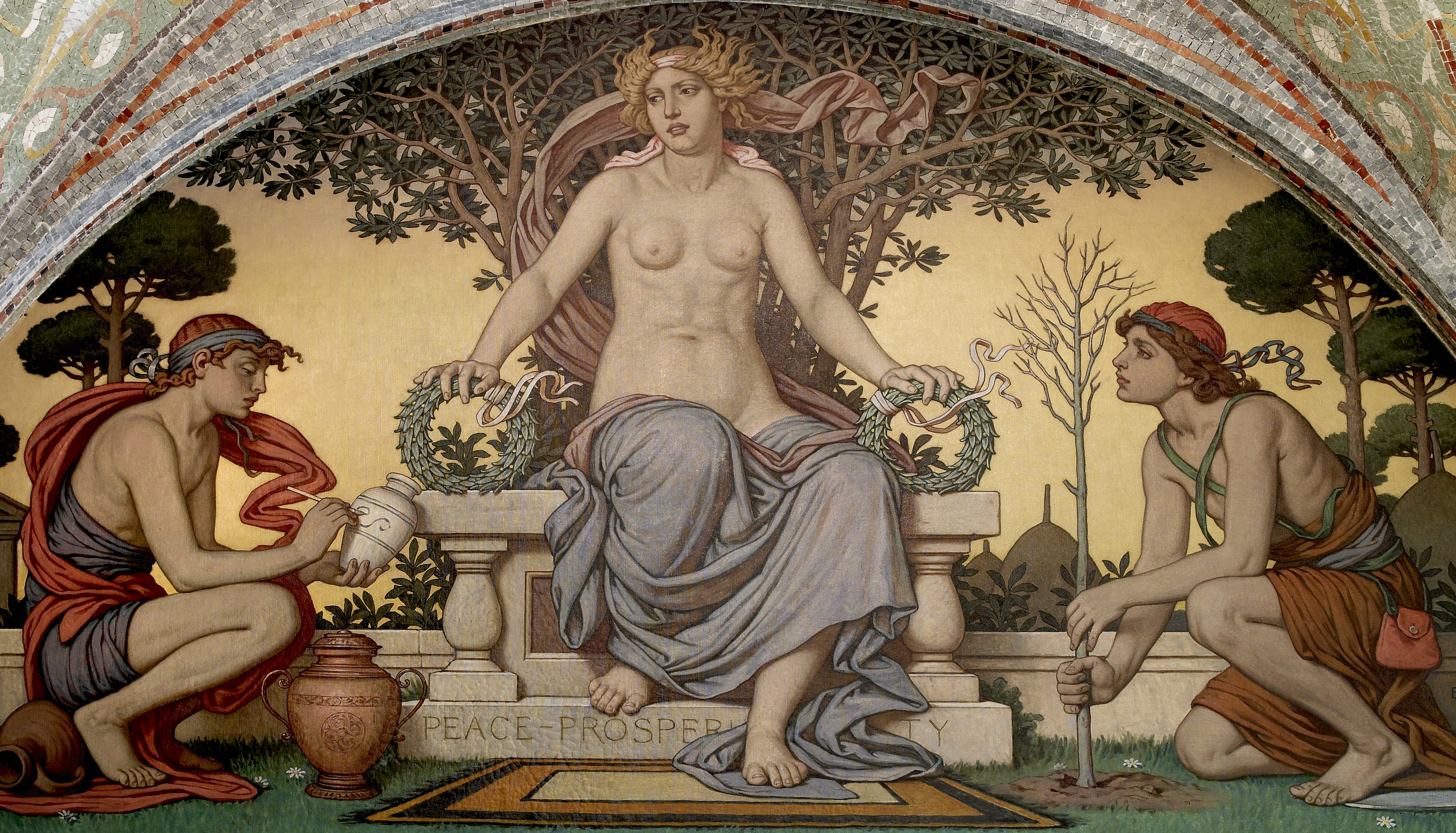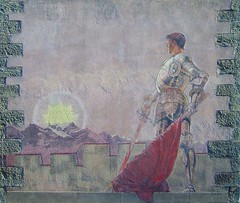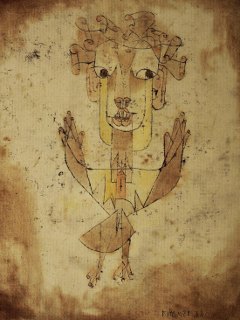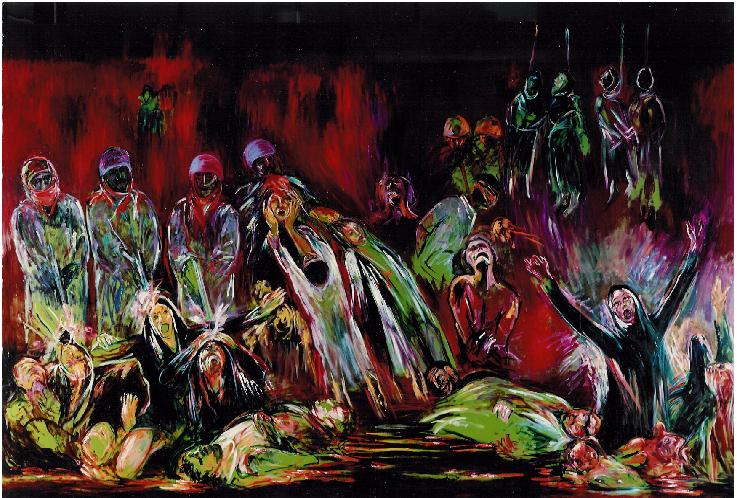

Classical Peace Art
Click here for webpage listing famous artists, architects & sculptors with the dates & names of peace monuments they created.
Click here for copyrighted images of peace art from the Erich Lessing Culture & Fine Arts Archive.
Click here for "Simbologia de paz: Puede ser una parte de la historia de la paz" from Sapin.
Click here for portraits. | Click here for mosaics. | Click here for murals. | Click here for sculpture. | Click here for visionary peace monuments (folk art).Right click image to enlarge.
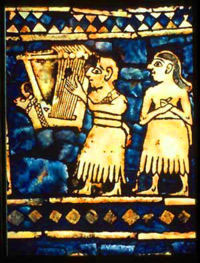

2600-2400 BCE - Peace Panel, Standard of Ur, British Museum, London (England). "Peace" [upper image & detail] portrays a banquet scene. Attendants parade animals, fish, and other goods (possibly war booty) before seated figures, while a lyrist entertains the throng." "The 'standard' is a hollow wooden box and a mosaic inlaid with red limestone, lapis lazuli and shells. Its original function is not understood, but it has been suggested it was born upon a pole as a standard, thus its common name, 'The Standard of Ur.' Another suggestion was its use as a carrying case for a musical instrument. Excavated in what was the old royal cemetery in what had been the ancient city of Ur, which was located in modern-day Iraq, south of Baghdad. There are two larger panels – one side depicting peace and the other side war [lower image]."
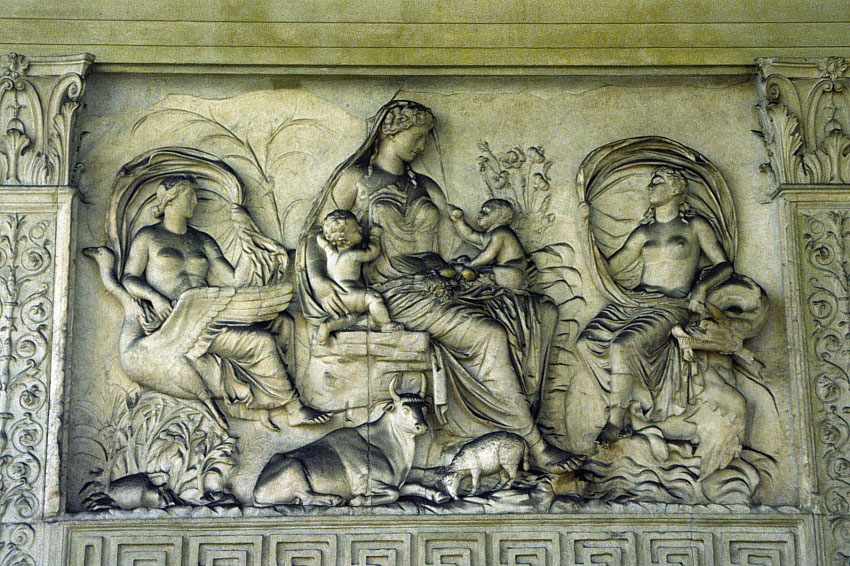


January 30, 9 BCE - Ara Pacis Augustae / Altar of Augustan Peace, Rome (Italy). Built by Roman emperor Augustus Caesar [63 BC - 14 AD]. Enclosed in 2006 by new building designed by American architect Richard Meier.
75 AD - Templum Pacis / Temple of Peace, Forum of Vespasian, Rome (Italy). Built by Vespasian [9-79 AD]. "He also adorned it with paintings and statues by the greatest of the old masters. In fact, in that temple were collected and deposited all those works that men had hitherto travelled over the whole world to see, longing to set eyes on them even when scattered in different lands... Considered by Pliny to be one of the three most beautiful buildings in Rome. For Herodian, writing more than a century and a half later, the Temple of Peace was 'the largest and most beautiful of all the buildings in the city.'"


1181 - "Noah Receiving the Dove," Augustinian Monastery, Vindobona, near Vienna (Austria). Part of panel #15 of 17 tripartite paels known as the Altar of Verdun. Created during the short interval between the 2nd and 3rd crusades.
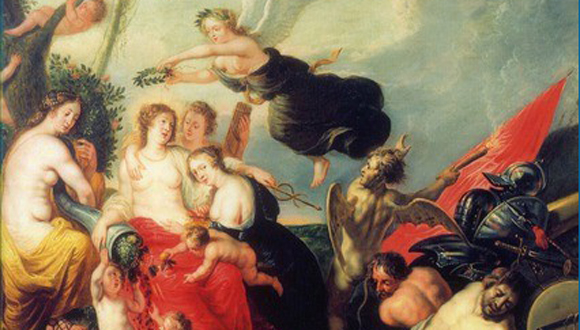
Date? - Name?, Location? (France?). Goddess crowning peace? /// This painting shown on cover of " La paix, histoire politique et militaire," for which "Jean-Pierre Bois, professeur émérite d’histoire moderne, a reçu en novembre 2012 le prix Drouyn de Lhuys de l’académie des sciences morales et politiques."
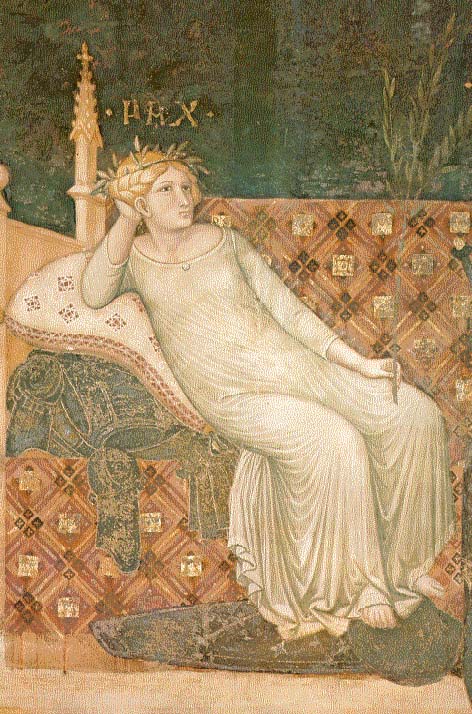


1338-39 - Pax, Sala della Pace / Peace Hall, Palazzo Pubblico (town hall), Siena, Tuscany (Italy). Part of the fresco entitled "Effects of Good Government in the City & Countryside" by Ambrogio Lorenzetti [c1290-1348].
"The Glorious Art of Peace: From the Iliad to Iraq" by John Gittings (2012), Oxford University Press.

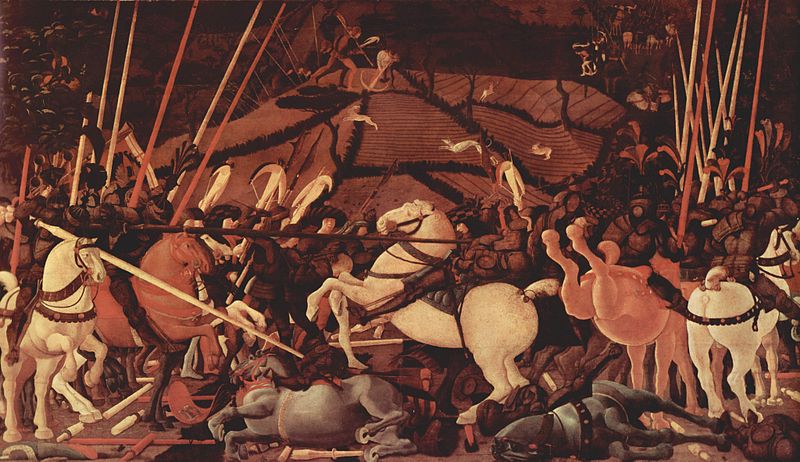


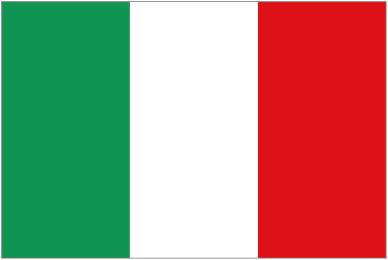
1440-1445 - The Battle of San Romano, A set of three paintings by the Florentine painter Paolo Uccello [1397-1475] depicting events that took place at the Battle of San Romano in 1432. Much admired in the 15th century. They are now divided between three collections, the National Gallery, London, the Galleria degli Uffizi and the Musée du Louvre, Paris.
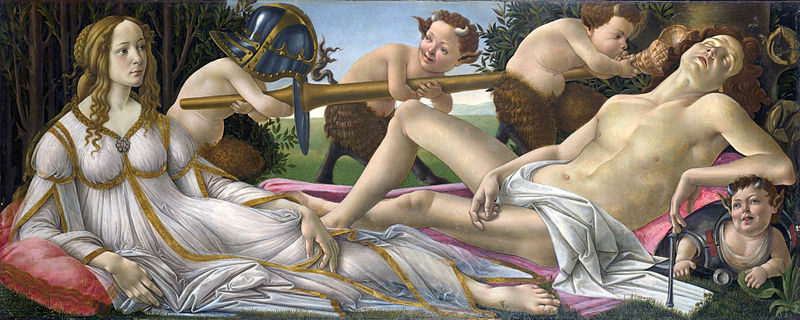

Circa 1483 - Venus and Mars, National Gallery, London (England). A painting by the Italian Renaissance master Sandro Botticelli [c1445-1510].

c.1510 - Il Figlio Prodigo / The Prodigal Son, Museum Boijmans Van Beuningen, Rotterdam (Netherlands). By Hieronymus Bosch [c1450-1516]. Also known as The Wayfarer, The Vagabond or The Pedlar.



1523 - "Portrait of Desiderius Erasmus of Rotterdam with Renaissance Pilaster," National Gallery, London (England). Oil & tempera on panel, 76 × 51 cm. On loan from Longford Castle. By German painter Hans Holbein the Younger [c1498-1543]. "In 1523, Holbein painted his first portraits of the great Renaissance scholar Desiderius Erasmus [1466-1536], who required likenesses to send to his admirers throughout Europe. These paintings made Holbein an international artist."

1523 - "Porträt des Erasmus von Rotterdam am Schreibpult," Musée du Louvre, Paris (France). By German painter Hans Holbein the Younger [c1498-1543].
Circa 1602 - ''Allegorie des Friedens und des Uberflusses / Allegory of Peace, Art and Abundance" by Hans von Aachen [1552-1615], Hermitage Museum, St Petersburg (Russia).


Circa 1618 - ''The Union of Earth & Water (Antwerp and the Scheldt)" by Peter Paul Rubens [1577-1640], Hermitage Museum, St Petersburg (Russia). "The alliance of Cybele, Goddess of Earth, and Neptune, God of Victory, as the important alliance of Flanders and the sea, the River Scheldt and the city of Antwerp."

1623 - "La Pendaison / The Hanging," Nancy (France). "The 11th and most famous plate from "Les Grandes Misères de la guerre / The Great Miseries of War," a series by French artist Jacques Callot [c1592-1635]... It is likely that Callot's etchings of a disorderly army were an influence on Francisco Goya [1746-1828] almost two centuries later (qv)... The plates still exist, in a museum in Nancy, as do seven drawings of whole compositions, and many tiny studies for figures, with a large group in the Hermitage Museum in St. Petersburg (Russia)."


1628 - "The Reconcilation of King Henry III & Henry of Navarre," Memorial Art Gallery of the University of Rochester, Rochester, New York (USA). By Peter Paul Rubens [1577-1640].



1629-30 - "Allegory on the blessings of peace", National Gallery, London (England). By Peter Paul Rubens [1577-1640]. Oil on canvas, 203.5 x 298 cm (80 1/8 x 117 1/4 in). Also called "Peace & War" and "Minerva protects Pax from Mars."



Circa 1638 - "Allegory of Peace and the Arts under the English Crown," Central Hall, Queen's House (now Malborough House), Greenwich (England). Ceiling painting. "One of the few documented collaborations between Artemisia Gentileschi [1593-1653] and her father Orazio Gentileschi [1563-1639], who arrived in Britain in 1626 to work at the Court of King Charles I and Queen Henrietta Maria of England."


1648 - Die Gesandten beschwoeren den Frieden zu Muenster / Ratification of the Treaty of Münster (Peace of Westphalia) by Dutch painter Gerard Ter Borch [1617-1681], National Gallery, London (England). Click here for Wikipedia article about the Peace of Westphalia.

1648 - "Banquet of the Amsterdam Civic Guard in Celebration of the Peace of Münster," Rijksmuseum, Amsterdam (Netherlands). By Dutch painter Bartholomeus van der Helst [1613-1670]. "On 25 June 2006, Hans-Joachim Bohlmann, who had already caused an estimated 130 million Euros damage in similar attacks in Germany, intentionally damaged the painting by spraying lighter fuel on its surface and lighting it."
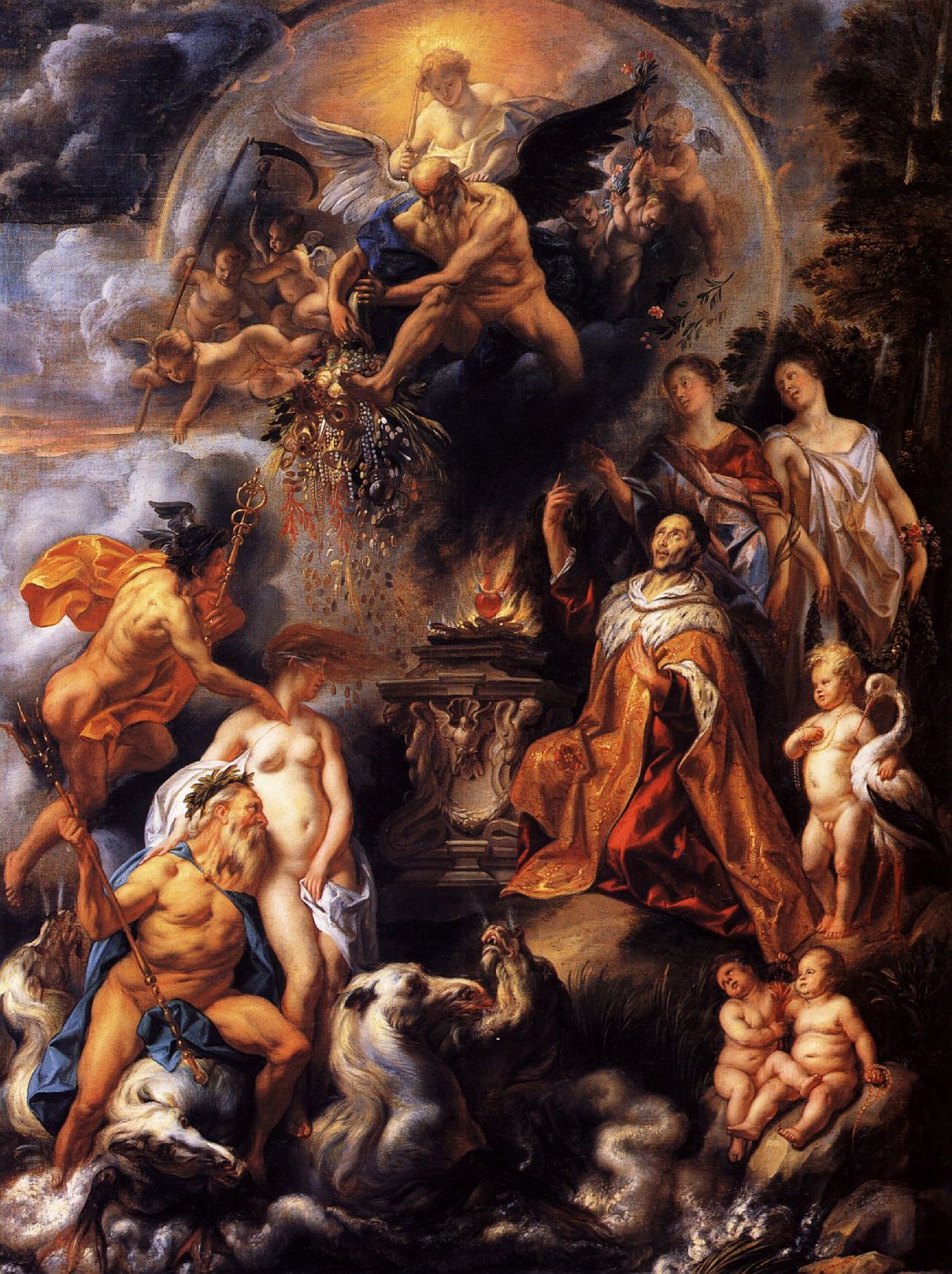
1654 - "Allegory of the Peace of Westphalia," Nasjonalgalleriet, Oslo (Norway). Oil on canvas by Flemish painter Jacob Jordaens [1593-1678]. Click here for Wikipedia article about the Peace of Westphalia.

1651 - "The Thiumph of Frederick Hendrik", Oranjezaal / Orange Hall, Huis ten Bosch / House in the Woods, The Hague (Netherlands). By Flemish painter Jacob Jordaens [1593-1678]. Depicts "Bringer of Peace" Prince Frederick-Henry [1584-1647] self-assured & high on his victorious chariot, yet with the Goddess of Peace towering above him as tutelary deity & at the reins of the four-in-hand figure of of Prosperity." Text of banderolle: "Ultimus ante omnes de parta pace tyriumphus / To gain peace is the ultimate victory." Commissioned by his consort, Amalia van Solms-Braunfels [1602-1675]. Portrays over 50 figures plus many animals, olive branches & cornucopias. On both sides of the painting are portraits of men carrying products from the West & East Indies. /// The First Hague Peace Conference took place in this hall in 1899. Note "Peace entering to close the temple of Janus" on doors at far left of the right image.
1651 - Pair of doors "Peace entering to close the temple of Janus," Oranjezaal / Orange Hall, Huis ten Bosch / House in the Woods, The Hague (Netherlands). Allegorical group (painted by Jacob Jordaens ???) on the doorway of the hall. Depicts a nude Goddess of Peace approaching male & female figures struggling to keep the doors open. /// In the opening speech of the First Hague Peace Conference on May 18, 1899, Dutch foreign minister Willem Hendrik De Beaufort [1845-1918] "requested special attention for one canvas [sic]. 'It is the picture which represents Peace entering this hall to close the Temple of Janus. I hope, gentlemen, that this beautiful allegory will prove to be a good omen for your labours and that, after having completed them you will be able to say that Peace, which art brought into this hall, has sallied forth to shower her blessings upon the whole human race.'" /// "In ancient Rome, the main Temple of Janus stood in the Roman Forum. It had doors on both ends, and inside was a statue of Janus, the two-faced god of boundaries. The Temple doors (the 'Gates of Janus') were closed in times of peace and opened in times of war." "Janus is the god of beginnings & transitions, thence also of gates, doors, passages, endings & time. He is usually depicted as having two faces, since he looks to the future & to the past. The Romans named the month of January (Ianuarius) in his honor. Janus presided over the beginning and ending of conflict, and hence war and peace."
Date? - "An allegory of war and peace" by Jan Brueghel II [1601-1678], location? Sold by Christies, New York City, on Friday, January 26, 2007. Estimate = £15,000 – £20,000.



1654 - "Landscape with Peace & Justice Embracing," Toledo Museum of Art (TMA), Toledo, Ohio (USA). By French painter Laurent de La Hyre [1606-1656].


1662 - "Il Figlio Prodigo / The Prodigal Son," Hermitage Museum, St Petersburg (Russia). By Harmenszoon van Rijn Rembrandt. Image is a detail of the original painting.

Circa 1713 - "Feuerwerk am Tempel des Friedens / Fireworks in the Temple of Peace," Wilhelmshöhe Palace, Kassel (Germany). Engraving made on the occasion of the Peace of Utrecht (March-April 1713) by B. Picart, P. Roman & P. Loof.

C
E
I
L
I
N
G
1708-1716 - "Peace and Liberty Triumphing Over Tyranny," "The Painted Hall," Old Royal Naval College, Greenwich (England). Allegorical painting by James Thornhill [1675-1734], in which William & Mary accept an olive branch from Peace. /// "In the central oval, the painting shows Peace & Liberty triumphing over Tyranny. Enthroned in heaven with the Virtues behind them, are William & Mary. Above them is the Sun god Apollo shedding his golden light, while Peace with her doves & lambs surrounding her hands an olive branch to William."
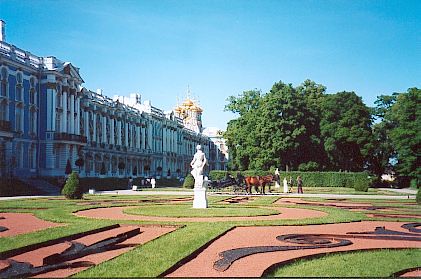
Circa 1735 - Allegory of Peace, Park of Bolshoy Catherine Palace, Tsarsoe Selo / Royal Village, 25 km south of St. Petersburg (Russia). By unknown Italian sculptor.
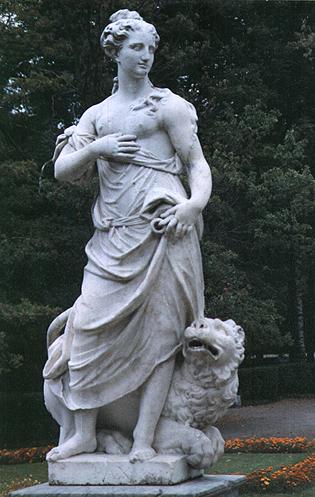

Circa 1735 - Statue of Pax, Garden of Pavlovsk Palace, St. Petersburg (Russia). By P. Baratta, "a master of the Venetian school." The palace contains "the Hall of Peace, decorated by Brenna, [which] repeats the layout and general architectural forms of the Hall of War, but is the latter's exact opposite in the motifs of its decor. It is ornamented with emblems of the arts, farming implements, sheaves of grain, basketfuls of flowers or fruit, musical instruments, clusters of grapes, cornucopias, etc.; in other words, attributes typical of the eighteenth-century cult of nature and idealization of rural life, and associated with the idea of peace."
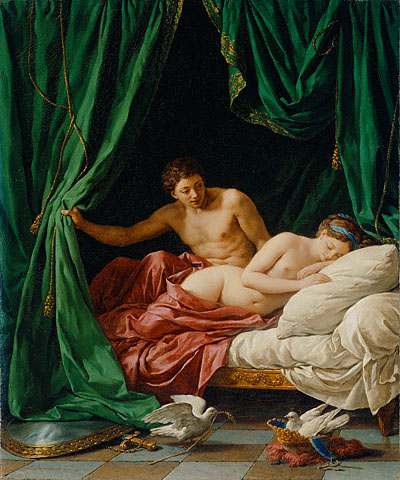

1770 - ''Mars & Venus: Allegory of Peace" by Louis Jean François Lagrenée [1724-1805], Getty Center, Los Angeles, California (USA). 33 9/16 x 29 3/4 x 2 in.

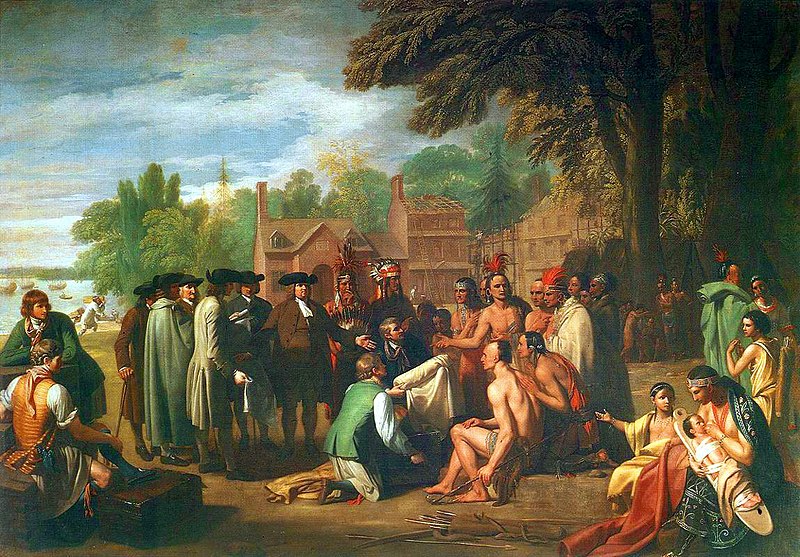

1771 - "William Penn's Treaty with the Indians when he founded the Province of Pennsylvania in North America," Pennsylvania Academy of the Fine Arts, Philadelphia (USA). Shows proprietor William Penn [1644-1718] signing peace treaty with Delawares at Sackamaxon in 1682. The scene was painted 89 years later by Benjamin West [1738-1820] at the request of Thomas Penn [1702-1775]. William Penn's "Peaceable Kingdom" came to an end with the Conestoga Massacre by the "Paxton Boys" on December 14 & 27, 1763.

1776 - "Peace and War," Art Institute of Chicago, Chicago, Illinois (USA). Oil on canvas 53.5 x 39 inches, by Italian painter Pompeo Girolamo Batoni [1708-1787].
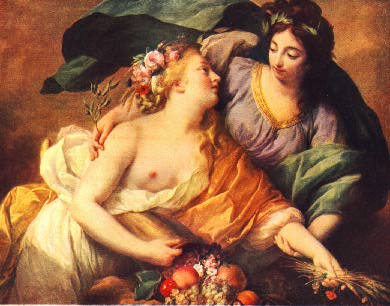
1780 - "Peace Bringing Back Abundance" by Élisabeth-Louise Vigée-Le Brun [1755-1842], Musée du Louvre, Paris (France). Oil on canvas, 40 3/8" x 52 1/8."
Date? - La Giustizia e la pace si baciano / Justice & Peace Shall Kiss, Pinacoteca Tosio Martinengo, Palazzo Tosio, Brescia (Italy). Depicts a biblical scene, referring to King James, Psalm 85: "Kindness and truth will meet, justice and truth shall kiss." What date, and who is the artist?


About 1783 - "Peace of Paris, 1783," Diplomatic Reception Rooms (Top Floor), U.S. Department of State, Washington, DC (USA). "Painting by Benjamin West [1738-1820] of the American delegation at the Treaty of Paris: John Jay, John Adams, Benjamin Franklin, Henry Laurens [1724-1792], and William Temple Franklin [1760-1823]. The British delegation refused to pose, and the painting was never completed." (The preliminary articles signed in Paris on November 30, 1782, were only effective when a similar treaty was signed by Britain and France, which French Foreign Minister Charles Gravier, Comte de Vergennes [1717-1787], quickly negotiated. France signed preliminary articles of peace with Great Britain on January 20, 1783, which were followed by a formal Peace of Paris signed on September 3, 1783.)

1810-1820 - "Los Desastres de la Guerra / The Disasters of War," Museo del Prado, Madrid (Spain). "A series of 82 prints created between 1810 and 1820 by the Spanish painter & printmaker Francisco Goya [1746-1828]. Although Goya did not make known his intention when creating the plates, art historians view them as a visual protest against the violence of the 1808 Dos de Mayo Uprising, the subsequent Peninsular War of 1808–14, and the setbacks to the liberal cause following the restoration of the Bourbon monarchy in 1814... Goya's scenes of atrocities, starvation, degradation & humiliation have been described as the 'prodigious flowering of rage...' They were not published until 1863, 35 years after his death. It is likely that only then was it considered politically safe to distribute a sequence of artworks criticising both the French & restored Bourbons. In total over a thousand sets have been printed, though later ones are of lower quality, and most print room collections have at least some of the set." /// The print shown here is "Lo Mismo / The Same," showing a man about to cut off the head of a soldier with an axe.

1814 - "El tres de mayo de 1808 en Madrid / The Third of May 1808," Museo del Prado, Madrid (Spain). By Francisco Goya [1746-1828]. Some say that the upraised arms in this painting inspired the famous peace symbol (created for the Campaign for Nuclear Disarmament in 1958).

1814 - "Tampoco / No More" by Francisco Goya [1746-1828]. Etching from "Los Desastres de la Guerra / The Disasters of War" (qv).

1819 - "Congress of Vienna," Musee du Louvre, Paris (France). By Jean-Baptiste Isabey [1767-1855]. "The Congress of Vienna was a conference of ambassadors of European states chaired by the Austrian statesman Klemens Wenzel von Metternich, and held in Vienna from September, 1814 to June, 1815."




Circa 1833 - "Peaceable Kingdom" by Quaker artist Edward Hicks, Worcester Art Museum, Worcester, Massachusetts (USA). Click here for more information on the "kingdoms of Edward Hicks." Probably painted in Pennsylvania. One of a series of similar paintings by Hicks made over a span of several years. An alegory of of the "peaceable kingdom" established by William Penn in 1682.



1840 - "The Slave Trade" by French painter Auguste-Francois Biard [1800-1882]. As of June 2007, it hangs at the entrance to the "From Slavery to Freedom" exhibit at the National Underground Railroad Freedom Center in Cincinnati, Ohio (USA).

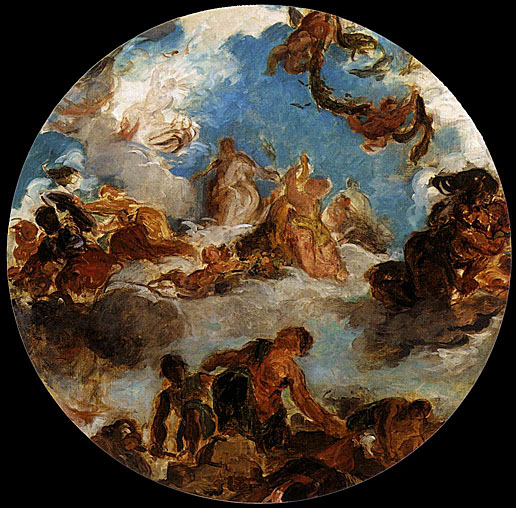
1852 - "Peace Descends to Earth," where? (France?). By French Romantic painter Ferdinand Victor Eugene Delacroix [1798-1863]. Where is original?
1852 - "Sketch for Peace Descends to Earth," Musee de Petit Palais, Paris (France). Oil on canvas , 77.7 x 55.1 cm.
1852 - "Peace Comes to Console Men and Restore Abundance," oil on canvas, 77 cm X 77 cm , Private collection.

1855 - "The Reconcilation of Montagues and Capulets (Over the Dead Bodies of Romeo and Juliet)," Yale Center for British Art, Yale University, New Haven, Connecticut (USA). By Frederic Lord Leighton [1830-1896].

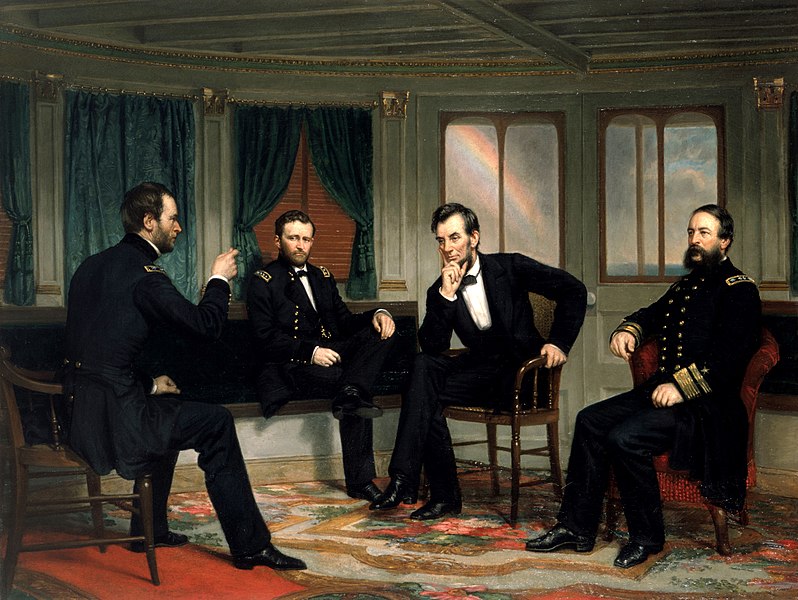

1868 - "The Peacemakers," White House, Washington, DC (USA). "Painting by George P.A. Healy. Depicts the historic March 28, 1865, strategy session by the Union high command on the steamer River Queen during the final days of the American Civil War... Displayed in the Treaty Room of the White House from the Kennedy through the George W. Bush presidencies. In his book 'Decision Points,' President Bush mentions the painting specifically & makes the following comment: 'Before 9/11, I saw the scene as a fascinating moment in history. After the attack, it took a deeper meaning. The painting reminded me of Lincoln’s clarity of purpose: He waged war for a necessary and noble cause.' The Obama administration moved the painting to the private President's Dining Room, where it currently hangs. There is also a copy of the painting at the Pentagon."
1871 - "Apotheosis of War," Tretyakov Gallery, Moscow (Russia). Oil on canvas by Russian artist Vasily Vasilyevich Vereshchagin [1842–1904]. Dedicated by the artist "to all conquerors, past, present and to come" -- or "to all conquerors, who were, who are, and who will be." Either way, an unambiguous condemnation of war.
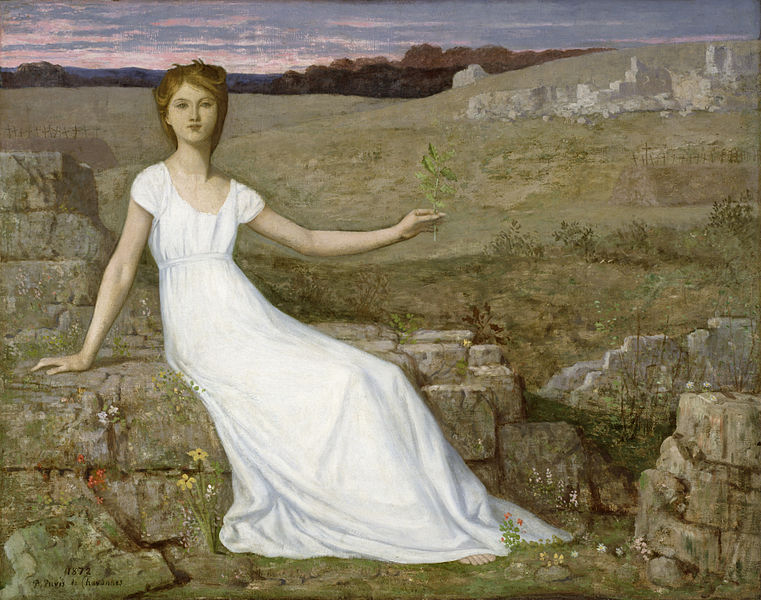

1872 - "Hope," a painting by French artist Pierre Puvis de Chavannes [1824-1898], Walters Art Museum, Mount Vernon Place, Baltimore, Maryland, USA. "A woman holds up an oak twig as a symbol of hope for the nation's recovery from war & deprivation after the Franco-Prussian War [1870-1871]."


1891 - Portrait of pacifist "Hodgson Pratt," National Portrait Gallery, London (England). By British painter Felix Stone Moscheles [1833-1917], oil on canvas, 29 1/2 in. x 24 1/4 in. (749 mm x 616 mm). Given by Memorial Committee in 1924.
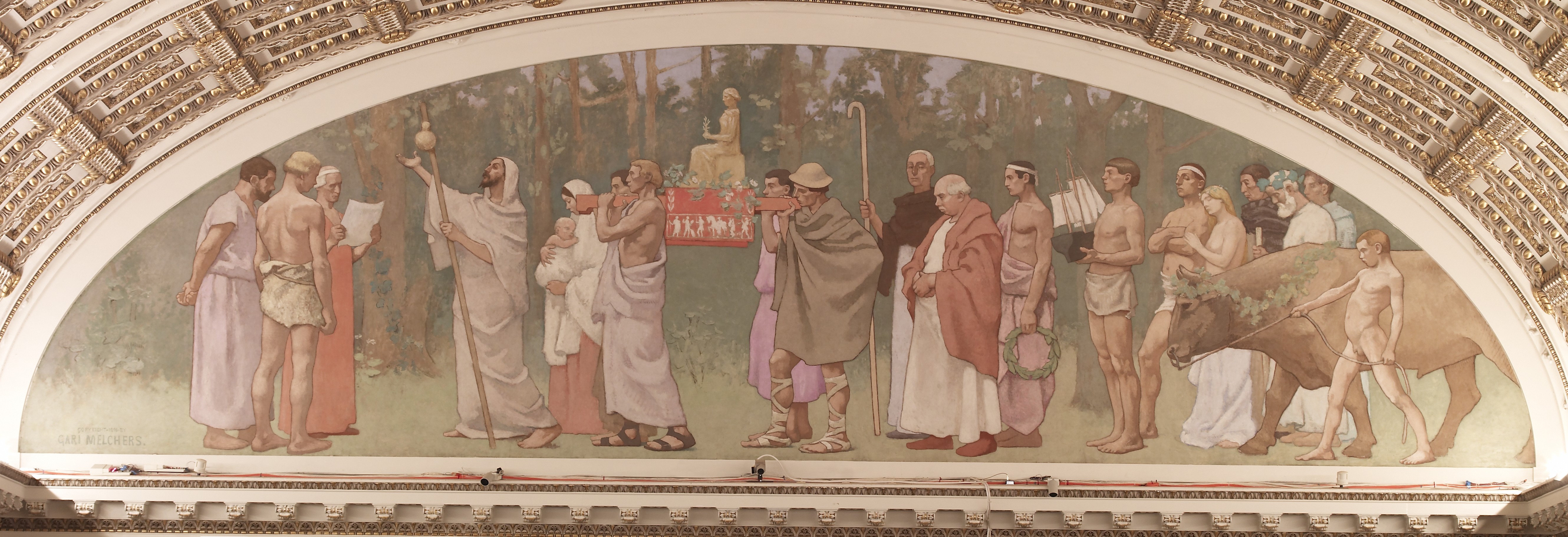


1896 Murals of Peace & War, Second Floor, Northwest Gallery, Thomas Jefferson Building, Library of Congress, Washington, DC (USA). By Gari Melchers [1860-1932].

1896 Peace & Prosperity, Thomas Jefferson Building, Library of Congress, Washington, DC (USA). By Elihu Vedder [1836-1923].

1897 - "Les Grands Artisans de L'Arbitrage et de la Paix / The Great Artisans of Arbitrage and Peace" by French artist Henri-Camille Danger [1857-1937]. Where is the original mural? From Arthur Eyffinger (1999), p. 335: "Among contemporary peace leaders, one recognizes Mancini, Frederic Passy, the Baroness von Suttner, Bajer and Nobel. The work was highly acclaimed in its day." /// From Arthur Eyffinger (2013), p. 122: "Intriguingly, on the great mural...which depicts the history of [arbitrage] through the ages and was a kind of echo of Raphael's 'School of Athens' (1510), Bertha von Suttner [1843-1914] is the only woman to be represented."
Damaged steel engraving which blongs to the Swarthmore College Peace Collection & is labeled "Given to Benjamin Trueblood [1847-1916]."

1899? - "Guerre à la guerre / War Against War" by Dutch painter Jan ten Kate [1850-1929], "The Dutch Vereshchagin" (qv). Canvas about 4x5 meters. Fried, Zola, Tolstoy, Czar Nicholas II, Dunant & other famous peacemakers are depicted in the foreground, including Bertha von Suttner [1843-1914] who is raising a Cross to ward off Death. One of three large ten Kate paintings which hung in Jean Bloch's International Museum of War & Peace, Lucerne (Switzerland), from 1902 until 1919/1920. (The other two were "La Garde à Mort/The Death Guard" & "Der Friedensengel/The Angel of Peace.") From Prof Peter van den Dungen 18Oct2013: " I researched [ten Kate's] peace paintings as part of my study of the history of the Bloch museum (published in 1981 in the Swiss Historical Journal), and was not successful in tracing any of the large paintings of his which were in the museum. More recently, colleagues in Lucerne also drew a blank. Arthur [Eyffinger] has reproductions in his books, but is unlikely to know more. I was first approached by a Dutch colleague about the Ten Kate paintings in Lucerne in the late 1970's, and it is frustrating that we are as ignorant now as then. One of the things I have never done is to pursue this matter via the professional art world, where there must exist various registers with the whereabouts of paintings."




Before 1910 - "Der Frieden (Eirene) / Peace (Eirene)," Paris (France) & D (Germany). 68 × 136 inch (172.7 × 345.4 cm) oil on canvas by German artist Ludwig Knaus [1829-1910]. Exact location(s)?


About 1910 - "Pax Defeating the Warrior," International Museum of War & Peace, Musegg Street, Lucerne (Switzerland). Near the main entrance of the building. "Facade painting by Hans Zürcher [1880-1958]... Expresses hopes of the late 19th / early 20th century peace movement that peace should win over war like day over night. World War I terminated the high expectations shortly after the museum was built in 1910, however." /// N.B.: The museum closed in 1919/1920. From Peter van den Dungen: "The building is [now] home to a pedagogical academy. [The] large painting...can still be seen today."
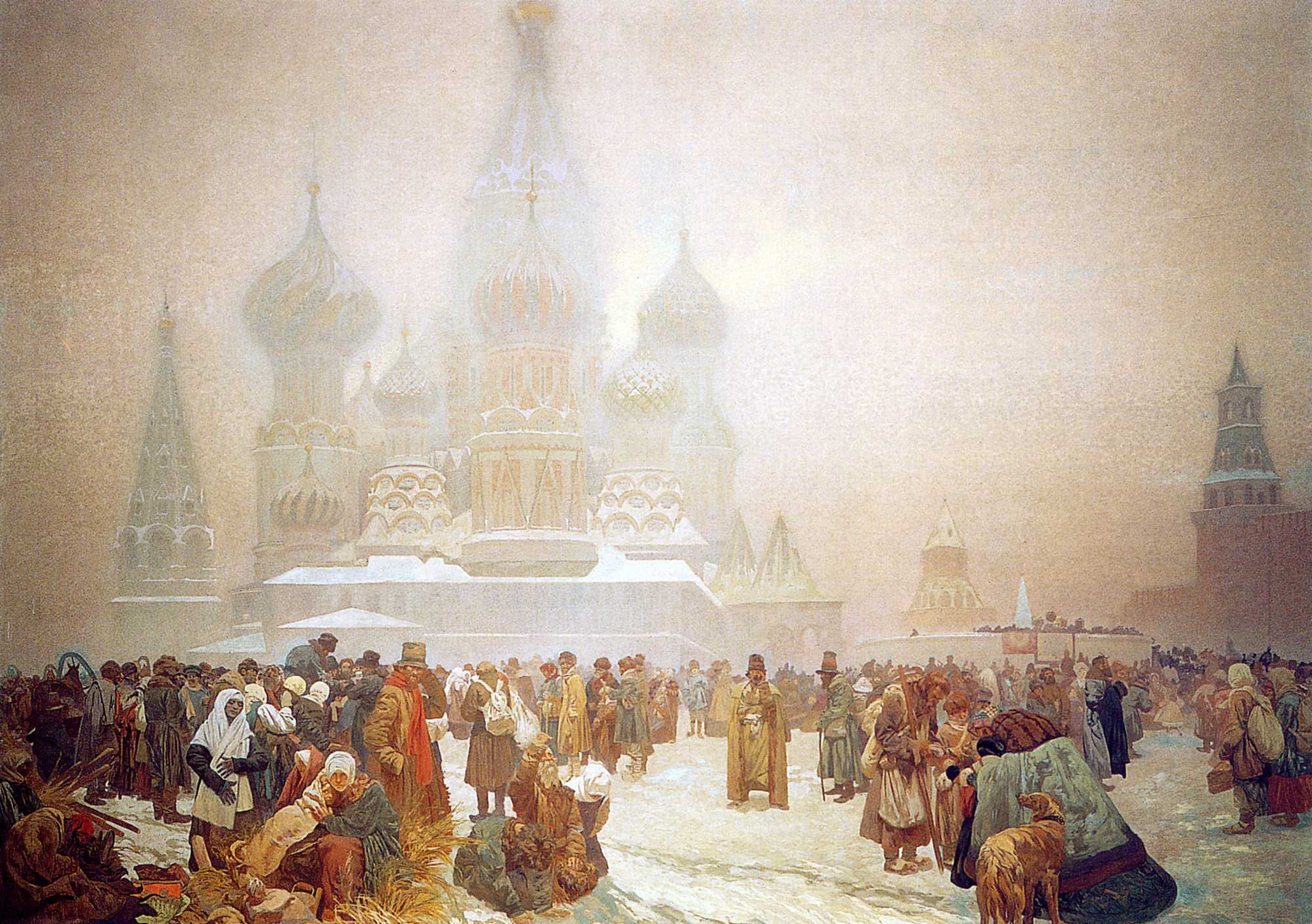
1914 - "Abolition of Serfdom in Russia in 1861: Freedom for Labour… A Charter for the Nation." From the cycle “The Slavonic Epic”, nr 19, by Bohemian Alfons Maria Mucha [1860-1939]. "Although the subject is one of the most contemporaneous to Mucha’s lifetime, this was one of the first of the Slav Epic canvases to be completed. Mucha visited Russia in 1913 & discovered that the great Slavic nation & ally that he so revered was in fact besieged with poverty & suffering and significantly less advanced than the rest of Europe. When Tsar Alexander II came to the throne in 1855, he instigated a number of reforms, including the Emancipation Edict in 1861 which gave Russian serfs personal freedom. For Mucha, this reform was too long overdue to be of any virtue. Uncertain of how the reform will improve their condition, Mucha’s subdued crowd of Russian peasants looks on anxiously as the official reads the edict. St. Basil’s cathedral & the Kremlin beyond are barely discernible through the thick shroud of fog which captures the uncertainty of the moment. The distant sun is just palpable through the cloud & offers a faint flicker of hope for a brighter future. Again, Mucha includes the figure of a mother & child to express both the fear & hope associated with future generations." /// Where is this painting today?



1915? - "Europa Trauert / Europe Mourns," location? (Germany?) Who made this & when? Where is the original painting? Became popular commercial postcard. One example offered on internet contains "letter addressed to a Fräulein Döring from Steglitz on reverse and postmarked at Berlin on 16.6.15."

July 1916 - "The Deserter," from The Masses, New York City, New York (USA). Cartoon by Boardman Robinson [1876-1952]. "The creator of the Masses, Max Eastman [1883-1969] - who faced prison along with Robinson, Minor & others - had this to say about what is probably Robinson’s most famous cartoon: "Surprisingly as it may seem, he actually introduced into America the idea, as old as Daumier, that cartoons should have the values of art as well as of meaning. When Mike 'blew in' with a picture of a white-clad, saintly Jesus standing against a stone wall facing the rifles of a brutish firing squad, I felt that number [of The Masses] deserved a place in the history of art."
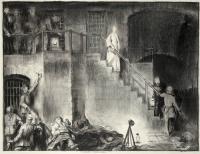

1918 - "The Murder of Edith Cavell," Princeton University Art Museum, Princeton, New Jersey (USA). Black chalk and black crayon over charcoal on cream wove paper by Anerican artist George Bellows [1882-1925]. Drawn for a series of 12 lithographs he produced depicting atrocities committed by the German armies in Belgium. Click here for more about Edith Cavell.

1920 - Angelus Novus / "New Angel," Israel Museum, Jerusalem (Israel). By Paul Klee [1879-1940]. "Object of an interpretative text by German philosopher & literary critic Walter Benjamin [1892-1940], who purchased the painting in 1921. In his 'Theses on the Philosophy of History' [1940] Benjamin wrote "...shows an angel looking as though he is about to move away from something he is fixedly contemplating. His eyes are staring, his mouth is open, his wings are spread. This is how one pictures the angel of history. His face is turned toward the past. Where we perceive a chain of events, he sees one single catastrophe which keeps piling wreckage upon wreckage & hurls it in front of his feet. The angel would like to stay, awaken the dead & make whole what has been smashed. But a storm is blowing from Paradise; it has got caught in his wings with such violence that the angel can no longer close them. The storm irresistibly propels him into the future to which his back is turned, while the pile of debris before him grows skyward. This storm is what we call progress."



1931 - "Pax Cultura" by Nicholas Roerich [1874-1947]. Where is this painting today?

1932 - " Madonna Oriflamma / The Lady of scarlet flame," Nicholas Roerich Museum, New York City, New York (USA). Tempera on canvas. 173.5 x 99.5 cm. By Nicholas Roerich [1874-1947].
Poem by Nicholas Roerich. "Flowers of Moria. The Lady of the Banner of Peace:" "The Lady of the Banner of Peace! Upon You, Our Lady, we set our hopes. Who will raise the Sign of Peace, The Sign of the Preservation of Heavenly Treasures? Who, if not You, will help us To raise the Banner, the Sign of creation for the sake of people? The sea is rough, and whirlwinds are destructive, But You’ll raise the Banner And fill people’s hearts With the consciousness of the sacred Spirit. You know that this Sign must not be put off, You know what destructions the earth has survived, You know how the best things are defamed, The things which are indispensable for people."

1932 - "The Grieving Parents," Vladslo German Military Cemetery, Vladslo, near Diksmuide (Belgium). By renowned German artist Kathe Kollwitz [1867-1945] whose son Peter was killed in WW-I and is buried in the cemetery. "Kollwitz' art is world famous because it expresses her concern with the fate and future of mankind. Through her art she stood on the side of those who were deprived of their rights, lived in poverty, or were exploitated. Her work also expresses her pacifist attitude and disapproval of war."



1932 - The Resurrection of the Soldiers, Sandham Memorial Chapel, Burghclere (England). Fresco by Stanley Spencer [1891-1959]. "...one of his most important works. ...part of a monumental cycle of paintings commemorating World War I. ...shows the soldiers climbing out of their graves bearing white crosses & reuniting with their dead comrades in all manner of embrace. The men are touching everything & also claspinhttp://ololc.org/about.htmlg each other -- some men (in the background of the painting) are lying close to the mules, one man kneels at Christ’s side, his head in his lap, one man caresses a turtle, while another clasps a dove to his chest. Of the painting, Spencer, who was a soldier in the war, wrote, 'During the war, I felt the only way to end the ghastly experience would be if everyone suddenly decided to indulge in every degree or form of sexual love, carnal love, bestiality, anything you like to call it. These are the joyful inheritances of mankind.'"

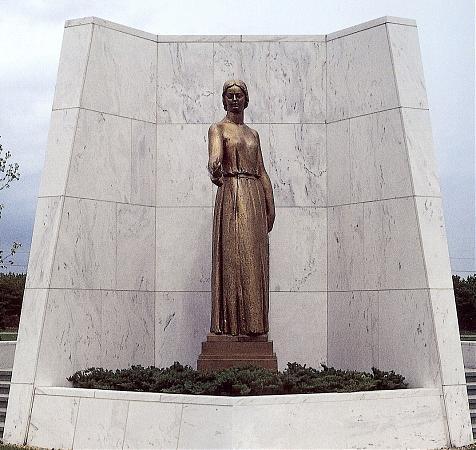

May 29, 1935 - Statute of "La Paix / Peace," "Garden of Normandie," Pinelawn Memorial Park (aka Long Island National Cemetery), Framingdale, Long Island, New York (USA). "Thirteen feet tall gilded statue of a toga-clad woman, one arm raised & offering an olive branch, by Louis Dejean [1872-1954]. [Originally] dominated the center of the [305-foot long] first class dining room of the French liner Normandie [1935-1942]" -- which sank in New York City during World War II. "The sculpture survived & was acquired [when?] by the cemetery after being discovered dismantled in a Brooklyn churchyard." (Medallions from two doors of the Normandie are still in use at Our Lady of Lebanon Marionite Cathedral in Boooklyn, NY.)

1936 - "Peace Memorial to Members of the U.S. Congress Who Voted Against Entrance Into World War, 1917." WHERE IS THIS MEMORIAL PAINTING TODAY? By Karl Yens [1868-1945]. "Photograph by E. F. Caldwell, Arch Beach, Cal." Depicts a forest with an allegorical figure, boy, girl & dog in foreground, surrounded by "To Motherhood, Jennett Rankin, Missoula, Mont. 1880-19," the names of 8 Senators, and the names of 49 Representatives. Jeanettee Rankin [1880-1973] voted against WW-I and WW-II. Inscription: "To the Memory of those Heroic Men, Senators and Representatives, who, having ignominy heaped upon them by a frenzied people, victims of mendacious propagdanda, dared stand forth on those fateful days of April, 1917, to cast their votes against the resolution driving us into an iniquitous foreign war." 1 of 40 monuments in "Peace Symbols" by Zonia Baber (1948), pp. 52-53. Entry #578 in the "Peace Movement Directory" by James Richard Bennett (2001). Image scanned from Baber. All information about this monument is from Baber. Bennett apparently copied his information from Baber. This painting has not been found on any other web site.



1937 - Guernica, Museo Nacional Centro de Arte Reina Sofía (MNCARS), Madrid (Span). Painted by Pablo Picasso [1881-1973]. Commisisoned by the government of Spain for the Paris International Exposition. Full sized copy at the United Nations in New York City.
.jpg)
1940 - "The Return," Musée René Magritte, Hotel Altenloh, Place Royale, Brussels (Belgium). By Belgian surrealist René Magritte [1898-1967].

1942 - "Ghandi, the Great Soul," Wood engraving by German-Amercan artist Fritz Eischenberg [1901-1990]. Artist’s proof. Edition size 100. Signed in pencil. Signed and titled in the block, 7-5/8 x 5-5/8 inches.

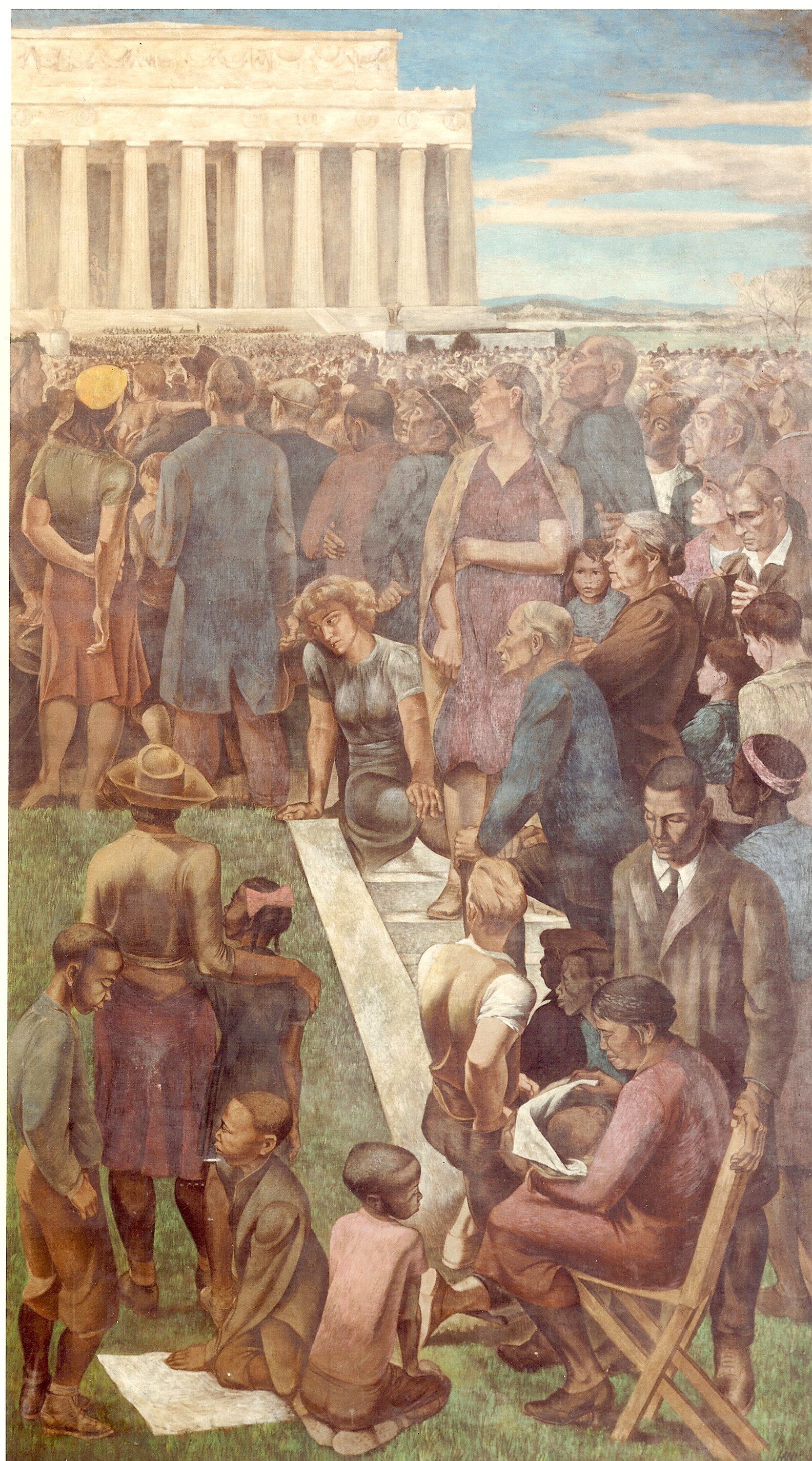


1942 - "An Incident in Contemporary American Life," Main Interior Building, Washington, DC (USA). Said to be the first civil rights monument. /// "In 1940, "before World War II, Secretary of the Interior Harold Ickes [1874-1952] commissioned Mitchell Jamieson [1915-1976] to paint a mural for the new Interior [Department] Building depicting the Marian Anderson [1897-1993] concert on the National Mall [on Easter Sunday, April 9, 1939]... Ickes & First Lady Eleanor Roosevelt had organized this concert after Anderson was denied [by the DAR] singing at Constitution Hall due to the color of her skin. In the mural, Jamieson concentrates on the [biracial] crowd, even giving us portraits of individuals that we would be standing next to, straining to hear the concert which inaugurated the use of the Lincoln Memorial as a sight for civil rights protests." /// "Ickes was a strong supporter of both civil rights & civil liberties. He had been the president of the Chicago National Association for the Advancement of Colored People. He encouraged private contractors working for the Public Works Administration (PWA) to hire both skilled & unskilled blacks... In 1933, Ickes ended segregation in the cafeteria & rest rooms of his department, including the national parks around the country. In a news conference on the eve of Thanksgiving 1938, Ickes proposed offering Alaska as a 'haven for Jewish refugees from Germany and other areas in Europe where the Jews are subjected to oppressive restrictions.' The proposal was designed to bypass normal immigration quotas, because Alaska was not [yet] a state... [In 1939, Ickes] supported African American contralto Marian Anderson when the Daughters of the American Revolution [DAR] prohibited her from performing in DAR Constitution Hall. Ickes was the organizer & master of ceremonies at Anderson's subsequent concert at the Lincoln Memorial... In 1945, As an official delegate to the founding United Nations conference in San Francisco, Ickes advocated for stronger language promoting self-rule & eventual independence for the world's colonies."
,1944,Rita.Angus.jpg?irn=81042&width=290&height=320)

1944 - "Dona Nobis Pacem (Ralph Vaughan Williams)," Flether Trust Collection, Museum of New Zealand Te Papa Tongarewa, Wellington (New Zealand). Oil on canvas, 786 x 680 mm. "Rita Angus [1908-1970] admired the English composer Ralph Vaughan Williams [1972-1958], who taught her close friend Douglas Lilburn [1915-2001] in London in the late 1930s. Vaughan Williams was a well-known pacifist and composed the cantata Dona Nobis Pacem (Grant us peace) in 1936. Angus includes scenes from her own life. The apple branch symbolises the pacifist community at Riverside, where she may have had the idea for the painting. She sketched the deserted homestead at nearby Pangatotara. The blonde child on the beach might be Angus herself as a girl."

1944 - "The New Democracy," Palace of Fine Arts, Mexico City (Mexico). "Depicts a woman who is trying to shatter the bonds of oppression and exploitation. She carries a torch of freedom to symbolize the new order. David Alfaro Siqueiros [1896-1974] includes strong visions of the future, similar to Diego Rivera [1886-1957]. Classical influence is shown in his approach to idealize human body form. Sometimes he exaggerates with expressive emotion. With his death came an end to a great movement in modern art."
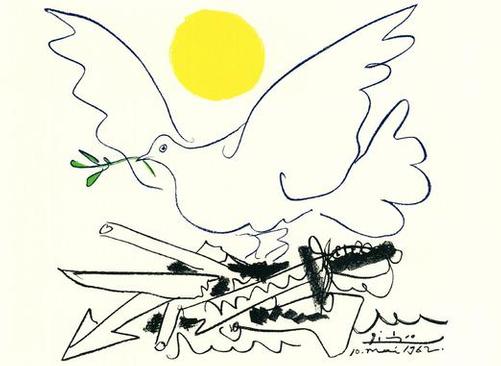
Circa 1949 - "Blue Dove with Yellow Sun" by Pablo Picasso [1881-1973]. Lithograph 30 x 22 inches. Where is the original?
April 20-23, 1949 - Congres Mondial de la Paix / World Congress of Peace, poster by Pablo Picasso [1881-1973], Paris (France). Picasso drew many doves of peace during this period.

August 1951 - Scarf to commemorate the 3rd World Festival of Youth & Students for Peace, East Berlin (East Germany). By Pablo Picasso. This WFYS was attended by 26,000 participants from 104 countries. Its motto was: "For Peace and Friendship - Against Nuclear Weapons." Scarf depicts peace dove surrounded by the profiles of four races.




July 3, 1952 - "Expressions of Freedom," First Class Dining Room, SS United States. "Four stylized figures representing the 'Four Freedoms' by sculptress Gwen Lux [1908-1987]."


1955 - "Guernica," UN Headquarters, New York City, New York (USA). Full-sized tapistry version of original commisisoned by the government of Spain for the Paris International Exposition and painted in 1937 by Pablo Picasso [1881-1973].

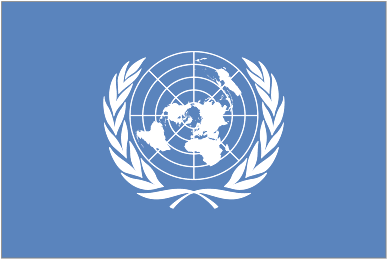

December 15, 1971 - "La Marcha de la Humanidad / The March of Humanity," Polyforrum Cultural Siqueiros, Mexico City (Mexico). By David Alfaro Siqueiros [1896-1974]. "Covers the entire walls on the building's top-floor elliptical forum and is the world's largest mural. The painting depicts humanity's evolution from the past to the present as well as a vision of the future."

1976 - Untitled, Beirut, Lebanon. Oil on canvas by Abdel Hamid Baalbaki (208 x 370 cm). Exhibited in "The Road to Peace: Paintings in Times of War, 1975-1991," first exhibition in the new Beirut Art Center (June 17-July 14, 2009). "Curated by Saleh Barakat. Hopes to show several artistic experiences directly related to the traumatisms of the Lebanese civil war produced by Lebanese artists and executed between 1975 and 1991. The body of works, in different media and practices, reflects an art that has been seldom shown in galleries or public spaces because of its violence and despair. It was produced under pain and anger in a form of expiation, cleansing and apology from the hostility, brutality and cruelty of a mad environment. 20 artists will be exhibited to highlight a period of the Lebanese art scene that has been kept in the dark for a long time."
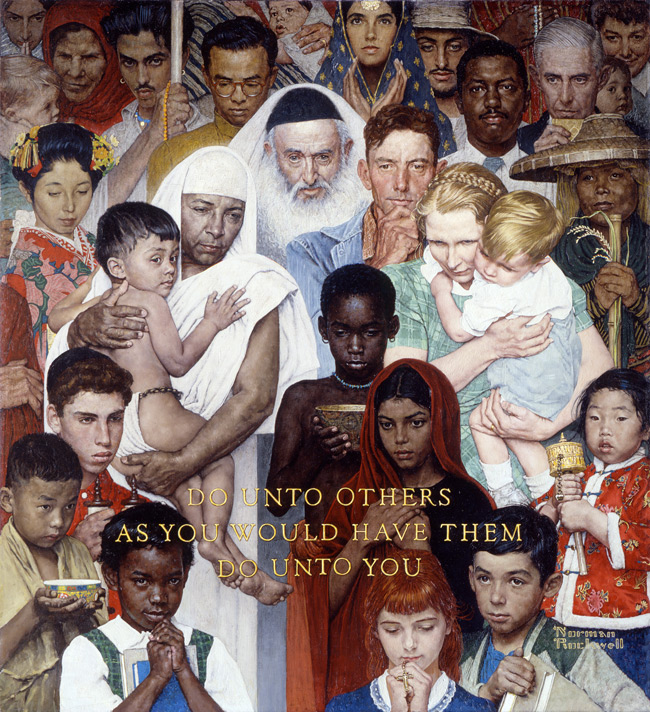
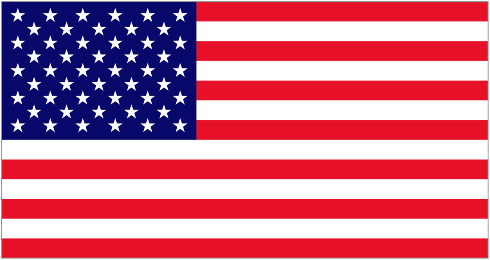
1985 - Golden Rule Mosaic, United Nations, New York City, New York (USA). Presented by first lady Nancy Reagan for the UN's 40th anniversary. A creation of Venetian artists based on a painting by American artist Norman Rockwell [1894-1978]. Depicts people of all races, religions, creeds & hues. Imparts the message of the Golden Rule ("Do unto others as you would have them do unto you").

Sat.Eve.Post
April 1, 1961
After 1992 - "The Rape of Kuwait, 1991-1992" by Andrew Vicari. Huile sur panneau, Collection of the Artist, 5.55 x 3.50 metres. "I consider this oil painting the most important in my Gulf War series of works..." "Vicari's major opus 'From War to Peace in the Gulf: The Liberation of Kuwait' is a collection of over 225 marvelous oil paintings, depicting battle scenes, as well as portraits of World Leaders, and is the largest work to be created since long before Napoleonic times."
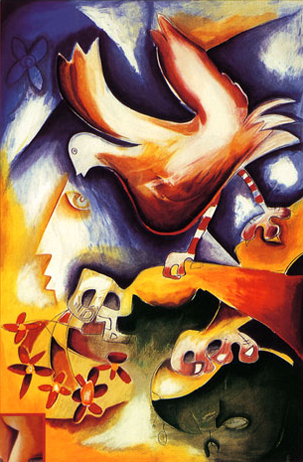

1998 - "Sprinkle the Joy of Peace," by Alexandra Nechita, young Romanian artist known as the "Petite Picasso." Painting is for sale.



2004 - "Let There Be Peace," by Alexandra Nechita, young Romanian artist known as the "Petite Picasso." Painting is privately owned. Sculpture is for sale (edition size is 49 plus 8 Artist Proofs and 8 "Monumental" works).
2002 - Garden of Peace, Vienna (Austria). "Oil on canvas by Werner Horvath. Depicts Hannah Arendt, Mahatma Gandhi, Bertha von Suttner & Immanuel Kant."

June 2005 - "Peace...Peace...Peace," New York City, New York (USA). Oil on canvas, 68" x 54." By Miguel Tio. "For this painting which I started last year, I worked with 14 different models who posed for the all the figures that are portrayed in it. I wanted to use a view of a sunset as a background for this work, & for quite a few times I rode my bike to the Hudson River in the late afternoon waiting for that sunset to appear… but it never seemed to show up. Last summer while I was visiting my sister in Illinois, it suddenly appeared right in front of me when we were driving back from Madison to Chicago. I urged my sister who was driving the car to make a stop on the side of the road. I took some photographs, & for the rest of the trip she kept on stopping trying to find good spots so I could continue taking pictures…that went on until the sun disappeared on the horizon. This painting is about the power of thought; all people joined together in one single brain wave decreeing inside their heart and soul…Peace…Peace…Peace. I believe in the existence of a myriad of beings whose souls are like light houses; their thoughts carrying out the light that travels the Earth becoming ever stronger with the meeting of each new light that converges in the same vibration. This power is available to all of us to use in making this world a better place. I hope you can sense that power too when you look at this painting. Peace…Peace…Peace."


P
A
I
N
T2007 - "Palestinian Pietà." Where is this drawing by Belgian political artist, cartoonist & illustrator Ben Heine? "The woman represented here is Jewish American rights activist Anna Baltzer. The illustration is inspired by the famous Michelangelo's Pietà." /// "What Heine refers to as his academic visual research on the limits of freedom of speech in political cartoons lead to controversy. Due to the pro-Palestinian & anti Zionism nature of some of Heine's political art & his participation in a 2006 competition calling for Holocaust-related cartoons on the Iranian website Irancartoon.com, Heine has been accused of anti-Semitism by critics, including the Belgian satirical weekly magazine Pere UBU & the Institute for Global Jewish Affairs."
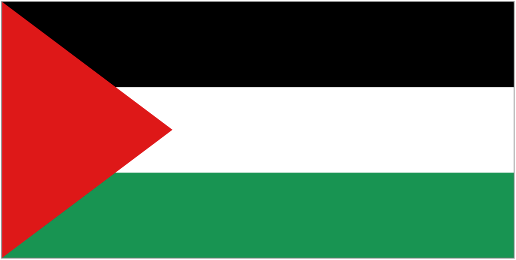




September 4, 2009 - Missing Peace Art Space," 234 South Dutoit Street, Dayton Ohio (USA). "A non-profit art gallery exploring the use of art in all forms as a means to communicate the human desire for peace." Gabriela Pickett, owner, & Steve Fryburg, director. Right image shows "Peace March" by Max Ginsburg (2007) from the gallery's first exhibition, "Know Justice, Know Peace." Member of International Network of Museums for Peace (INMP).


P A I N T I N G Early 2012 - Painting of peace & war, Mogadishu (Somalia). By Somali artist Abdullah Abdirahman Abdullah Alif. "A teenage boy - half flesh, half skeleton - stands in the middle of the painting, one hand clutching a dove, the other a rifle. Behind him are two very different futures: verdant fields, juicy melons & pretty buildings versus flames, graves, vultures & fire. 'We made this real simple,' explained Mr. Alif. 'A young boy is the backbone of society, & we want young boys to look at this & understand they have a choice right now, death & destruction or peace.' Mr. Alif, 40, is part of a team of artists who just emerged from years in hiding & have been commissioned, by a Somali nonprofit group, for the respectable wage of $400 a month to make giant paintings promoting peace. Their work will be displayed on busy street corners, the two-dimensional equivalent of a public service advertisement in a society without many TVs. During the Shabab years, Mr. Alif had a price on his head for drawings that were deemed un-Islamic. When he finally fled his neighborhood, looters snatched his file cabinets housing all his artwork. 'Twenty-six thousand drawings,' he said. 'Gone.'"
P A I N T I N G Date? - "Peace" by Youxin Yang.
